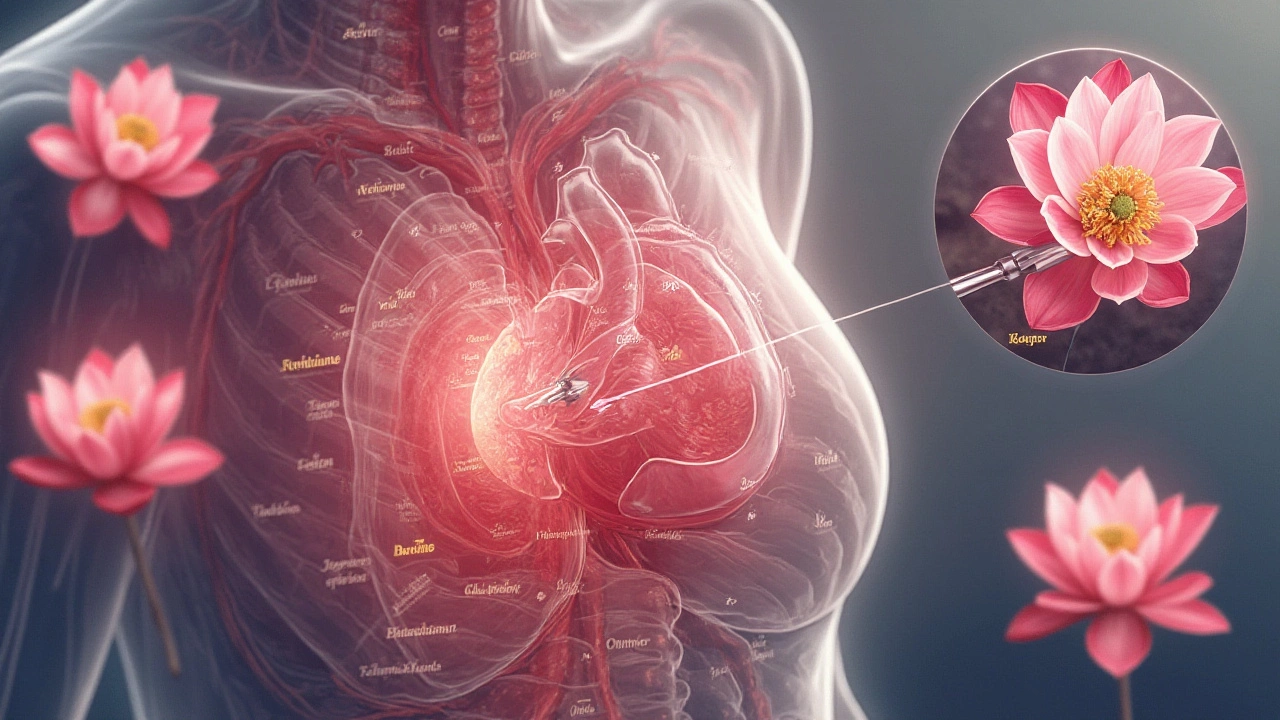Imagine facing the prospect of open heart surgery. The thought itself often brings a whirlwind of emotions, reflecting the blend of anticipation, anxiety, and a desire for more information. If you're concerned about how this procedure might impact your breasts, you're not alone. Many women share your questions.
This article isn't about fear-mongering; it's about shedding light on what truly happens to the breasts during an open heart surgery. Let me walk you through it, addressing common concerns and offering practical tips for the journey ahead. Consider this a conversation, one where your understanding blossoms and your worries diminish.
- Understanding Surgical Access
- Anatomy and Incisions
- Postoperative Changes
- Minimizing Scarring
- Recovery Tips
Understanding Surgical Access
Open heart surgery is no small feat, and its complexities begin long before the first incision. The quintessential step is gaining surgical access to the heart, a process that involves making strategic incisions in the chest area. For women, this naturally raises questions about how the procedure might affect their breasts.
Location and Type of Incision
Most commonly, surgeons opt for a sternotomy, a vertical incision along the breastbone. This path allows direct access to the heart, minimizing operative challenges. The procedure involves cutting through the sternum, which is intrinsically beneath the breast tissue, thereby affecting it only indirectly. The skin incision is typically longer than one might expect, spanning approximately 8 to 10 inches, depending on the anatomy of the patient.
In some cases, a less invasive approach, known as a minimally invasive direct access surgery, might be performed. This includes smaller incisions made beneath the breasts, which can potentially reduce noticeable scarring on the breast area.
Impact on Breast Anatomy
During surgery, the breast tissue itself is usually retracted together with the skin to allow access. No actual incisions are made into the breast tissue, so its integrity remains largely intact. However, due to the positioning and retraction, there may be some temporary changes in shape or slight swelling post-surgery.
In rare cases, especially when dealing with underlying conditions or if additional surgical procedures are necessary, there might be a need for further consideration on breast placement relative to the surgical field.
Post-Surgical Considerations
Post-surgery, some women might experience changes in breast sensation, which are typically temporary. The body's natural healing processes, coupled with post-operative care, usually help in restoring any sensory changes.
Understanding surgical access in the context of open heart surgery not only clarifies the mechanics of the operation but may also alleviate some anticipatory concerns and misconceptions surrounding it. Equipped with this knowledge, patients can approach their heart surgery with greater clarity and peace of mind.
Postoperative Changes
Upon waking up from open heart surgery, many patients become acutely aware of changes to several parts of their body, including the alterations that may have occurred to their breasts. Understanding what to expect can help in the emotional and physical recovery process.
Swelling and Bruising
It's common for patients to notice swelling or bruising in the chest area after surgery. This is largely due to the process of surgical access, where the sternum is typically opened to allow the surgeon to reach the heart. This process can affect the tissue around the sternum, including the breast tissue.
The breasts may experience temporary changes in size or shape due to swelling. The good news? This usually resolves over time as the body heals. Ice packs and prescribed medications can help alleviate discomfort and promote the reduction of swelling.
Incision Scarring
After surgery, the most noticeable change is often the scar. Surgeons typically make the incision along the sternum, which may extend up into the breast area, depending on the patient's anatomy and the technique used. While the scar is permanent, it usually fades and becomes less prominent over time, thanks to advances in surgical techniques and postoperative care.
Patients are encouraged to follow their surgeon's recommendations on scar care. This might include applying silicone sheets, using scar-reducing creams, or undergoing laser treatments.
Nerve Sensitivity
Some patients report a change in sensation in their breasts post-surgery, ranging from numbness to heightened sensitivity. This happens because nerves in the breast area might be affected during the operation. While these changes can be unsettling, they're usually temporary. Most patients regain normal sensation as healing progresses over weeks or months.
Emotional Impact
The surgery isn't just a physical ordeal but an emotional one as well. Changes in body image, even temporary ones, can affect mental health and self-perception. Open communication with healthcare providers and loved ones is crucial. Some patients benefit from professional counseling sessions to address these aspects.
Navigating Your Journey
Experience teaches us that knowledge brings empowerment. By understanding postoperative changes and actively engaging in recovery practices, patients can pave the smoothest path to healing. Remember, the road to recovery is a personal journey—lean on your support system and medical team whenever needed.

Minimizing Scarring
One of the most common concerns for patients undergoing open heart surgery is the possibility of scarring. After all, no one wants their body artfully tattooed by surgery unless it’s on purpose. So, what can be done to ensure that the marks left behind are discreet?
Understanding the Incision
For many open heart surgeries, the procedure requires a sternotomy, where the chest is opened vertically along the sternum. This incision can often interfere with breast tissue, but with careful planning, surgeons aim to minimize any visible remnants.
A skilled surgeon will make the incision in a way that allows for optimal access to the heart while considering how it aligns with the natural contours of the body, including the breasts. The precision of this incision greatly affects the eventual scarring.
Post-Surgery Care
Postoperative care plays a crucial role in the healing process and the appearance of any surgical scars. Here are a few tips to keep scarring to a minimum:
- Follow Doctor's Instructions: Your healthcare provider will give specific guidelines regarding activities, medications, and wound care—adhering to these is critical.
- Use Silicone Gel or Sheets: Some studies suggest these can help improve the appearance of scars over time by keeping the area hydrated.
- Stay Sun Safe: Avoid exposing the healing skin to the sun, as UV rays can darken scars.
- Embrace Gentle Massages: Once you’re cleared by your doctor, massaging the incision area can promote blood circulation and help flatten scars.
Treatments and Procedures
If the scars become a significant concern, several treatments can be considered to further minimize their appearance:
Laser therapy is known for effectively reducing the redness and volume of scars, while dermabrasion offers a mechanical solution to smooth the skin. Microneedling, another technique, can also remodel scarred tissue by encouraging new collagen production.
For those seeking more comprehensive solutions, consulting a dermatologist or a plastic surgeon experienced with post-surgical scars might provide personalized advice and treatment options tailored to your skin type and healing process.
Holistic Approach
While it’s easy to focus on the physical aspect of recovery, emotional well-being is equally essential. Studies show that individuals who maintain a positive outlook tend to heal better after surgery. So, embrace the changes, knowing that medical and aesthetic options abound, enabling you to approach your journey to recovery with confidence.
Recovery Tips
Emerging from the haze of open heart surgery is only the start of the recovery journey, and your body, including your breasts, has its own process and pace of healing. This recovery period is an opportunity to give yourself the patience and care you deserve.
Gentle Care for the Incision
It's crucial to treat the incision area with the utmost care. The sternum is realigned and needs time to mend, impacting how you manage movement. Supportive bras without underwire are recommended initially to avoid pressure on the healing area. This small adjustment can contribute significantly to comfort and healing.
Pacing Your Physical Activity
Reclining in comfort may sound tempting, but gentle movement is your ally in regaining strength. A daily short walk, even just around your living room, stimulates circulation and aids recovery. Consult with your healthcare provider for personalized guidelines on when to gradually increase activity levels for optimal heart and breast health.
Addressing Swelling and Discomfort
Swelling around the chest, including the breast area, is common post-surgery. Ice packs, applied with a cloth barrier for brief intervals, help reduce this. Your healthcare team might also suggest medications to manage pain and discomfort effectively.
Hydration and Nutrition
Your diet plays a vital role in recovery. Keeping hydrated and consuming nutritious meals rich in vitamins and proteins strengthens your body. Foods abundant in antioxidants, like berries and leafy greens, can promote healing while enhancing your overall heart health.
Mindfulness and Emotional Well-being
Don’t underestimate the mental and emotional aspect of recovery. Mindfulness practices, whether breathing exercises or meditation, help alleviate anxiety, promoting a sense of peace and healing. Connecting with support groups offers a community to share experiences and find encouragement.
- Consider short, guided meditation sessions each day.
- Reach out to online recovery forums for shared understanding.
Embracing these recovery tips can make the journey smoother and the outcome more positive, leading to restored vitality and a newfound appreciation for your heart and body's resilience.





Write a comment